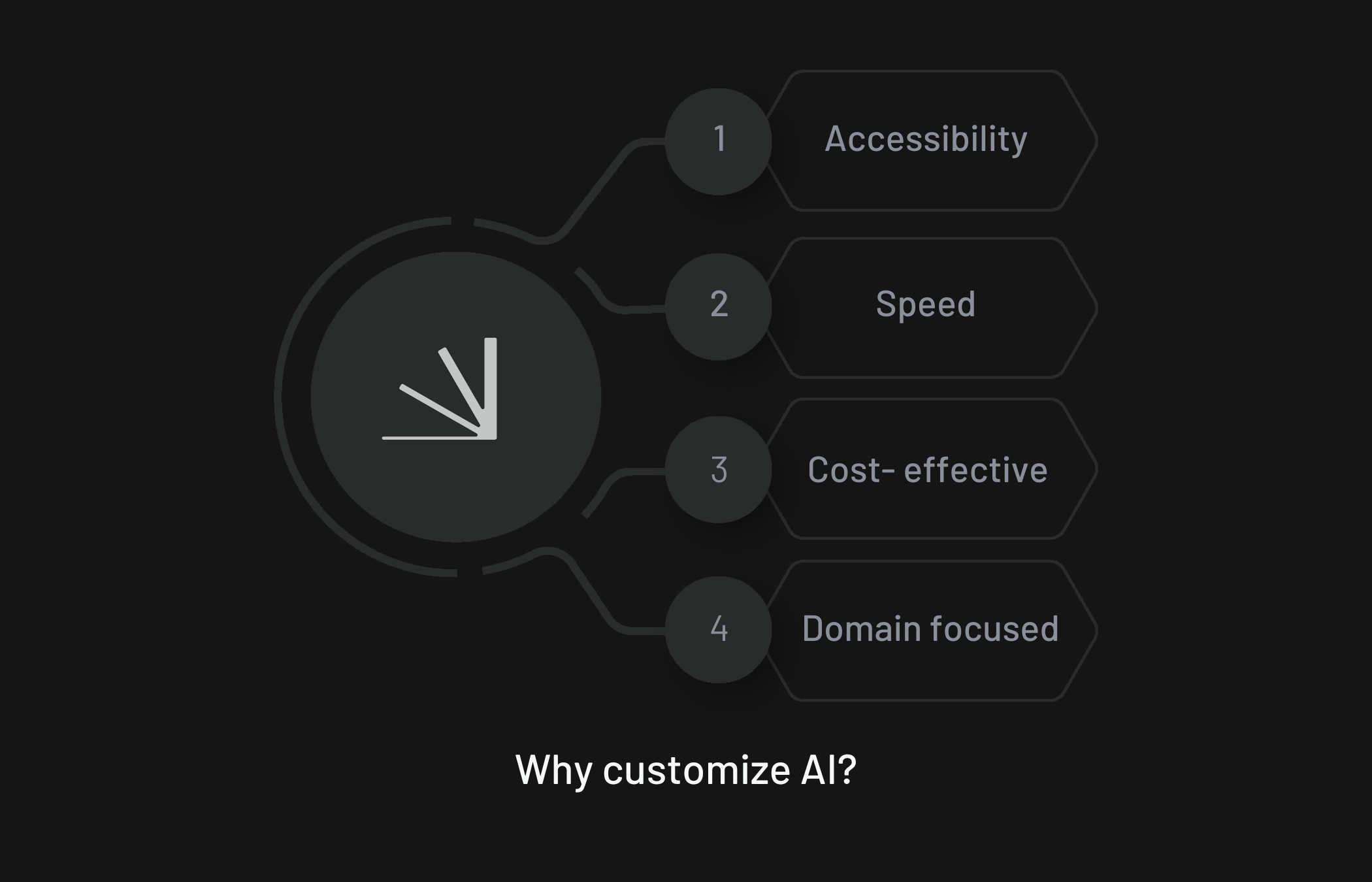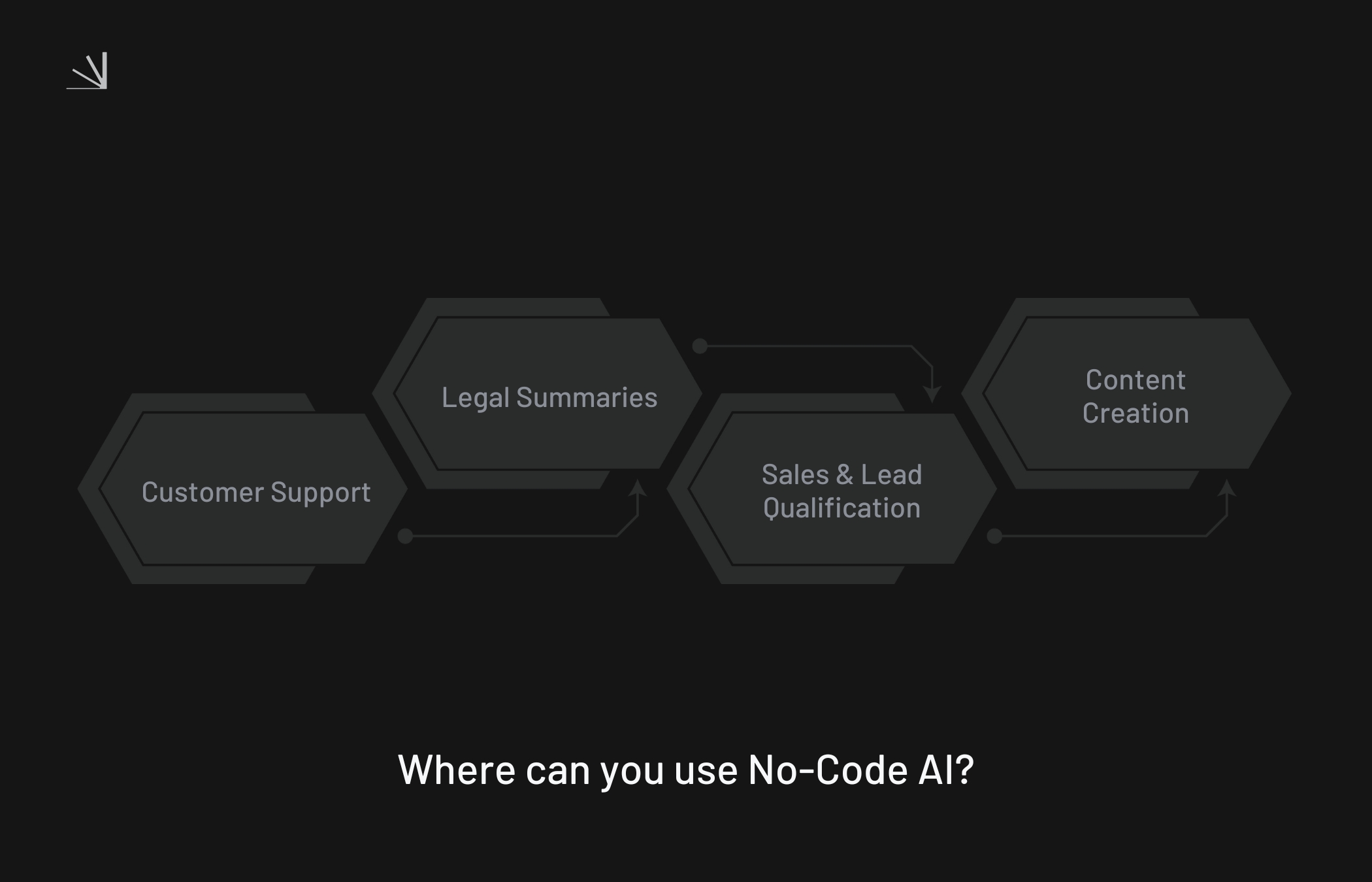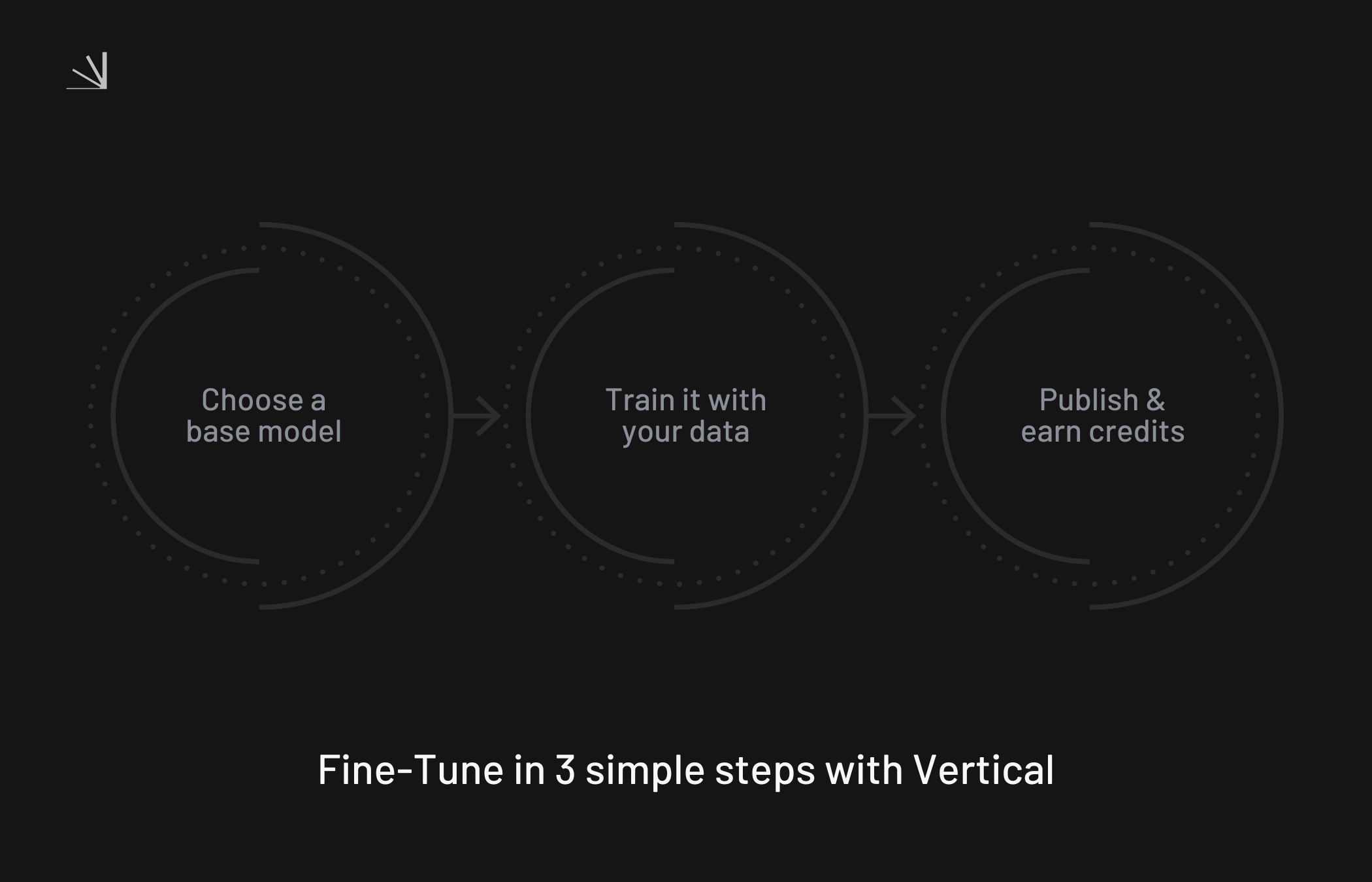
What is no-code AI? How to fine-tune AI without writing code
AI tools like ChatGPT are now widely used by all kinds of people. You type in a prompt into the AI and you get output. But this only scratches the surface of what AI is (already) capable of. In professional settings, the next step is customizing and fine-tuning AI to your specific business and industry, also called Vertical AI.
This used to be exclusive to programmers though. Training different models, writing dedicated code, and managing the infrastructure demanded technical knowledge. But this is no more! The barrier is dissolving quicker than you might think through no-code AI. It lets you customize, and fine-tune AI systems without writing a single line of code. This is more than just convenient, it enables everyone to take ownership of AI development.
Ready to discover how you might be in the forefront of AI development? We tell you what no-code AI entails, how it works and how you can start fine-tuning yourself.
How does no-code AI benefit you?
Before diving into the ‘how’, let us discuss the ‘why’ first.
General-purpose models like ChatGPT are impressive on their own. However, they are also broad. How many times have you gotten an AI output that just doesn’t answer your questions precisely, or doesn’t even come near. This can be an even bigger hurdle in professional settings. The AI doesn't understand your industry’s jargon, your company’s policies, or your brand’s tone of voice from the start. Fine-tuning the AI bridges this gap. Training it transforms it into a specialized assistant that reflects your data, your workflows, and your priorities.
While fine-tuning is already being done for years, it has been the exclusive domain of developers and data scientists. The benefit of no-code AI now makes it accessible to professionals and domain experts. That shift matters because it enables:
Accessibility: Anyone can train AI tailored to their needs.
Speed: Adjustments can be done in hours instead of weeks of (re-)writing code.
Cost-effective: Not only due to the enhanced speed, but also due to less dependence on dedicated development teams or specialized infrastructure.
Domain-focused: Puts power in the hands of the domain expert, not just engineers.
For businesses, this translates to competitive advantage. Instead of waiting on tech teams, professionals can test and deploy AI solutions directly.

What makes no-code AI
Now you know the ‘why’, how do we define no-code AI? No-code AI refers to platforms and tools that allow the fine-tuning, training, and adaptation of AI models without writing code or the need for technical expertise. Instead of writing scripts, you get a visual interface that simplifies the workflow through drag-and-drop functionalities. Key characteristics include:
A visual interface like drag-and-drop workflows instead of lines of code.
Prebuilt AI models are built in as ready-made building blocks.
Accessibility is set-up so that non-technical users can use the platform and shape AI to their use cases.
No-code AI vs low-code and traditional AI development
Understanding no-code AI also means understanding how it compares to other forms and when to use which.
Low-code AI: Combines visual interfaces with some coding. It’s designed for tech-savvy users who know some scripting and how to handle API integrations.
Traditional AI development: The full programming route. It requires data scientists and engineers to build models from scratch using frameworks like TensorFlow or PyTorch. It offers the most flexibility but is also the slowest and resource-intensive.
Each form has its advantages. No-code AI is fast and accessible, low-code AI offers a bit more flexibility and integration options, and traditional AI provides maximum control and scalability for complex projects. Here you can find a full overview.
Feature | No-Code AI | Low-Code AI | Traditional AI Development |
Who it’s for | Non-technical users, domain experts | Tech-savvy users, business analysts | Data scientists, software engineers |
Coding required | None | Minimal (some scripting or API integration) | Full programming knowledge required |
Speed to deploy | Fast, minutes to hours | Moderate, hours to days | Slower, days to weeks |
Tools used | Visual interfaces, prompt builders, prebuilt models | IDEs + drag/drop builders | Python, PyTorch, TensorFlow, custom ML pipelines |
When to use | Quick deployment, domain-specific AI without coding | When you need some custom logic or integrations beyond no-code | Full control, complex models, research, or large-scale production environments |
Now that the differences are clear, how do you decide which type of AI fits your use case? Horizontal and vertical AI aren’t in competition, they’re complementary. Each offers distinct advantages depending on the problem you're trying to solve.
What makes no-code AI unique?
Behind the simplicity of no-code platforms for users lies a complex foundation. What makes no-code AI unique isn’t that it uses advanced models. It’s that it makes those models accessible without programming.
Pre-trained models and APIs
No-code begins with linking AI models (like ChatGPT or Claude) to the platform. In traditional AI development, a developer would access these through APIs and code libraries. In the no-code environment, the models are already put in. They are basically turned into ready-to-use building blocks. The user doesn’t see the API keys or infrastructure, they just select the model they want.
Visual interfaces and the workflow
Rather than writing code, no-code tools let users define how data flows through the AI using an intuitive interface. The most basic example is a process where a query becomes input for a model, and the model’s response is automatically loaded in. The no-code platform handles the underlying logic. You only create prompts, set conditions, and adjust (additional) steps in the interface.
Fine-tuning without programming
Where no-code AI becomes truly powerful is in fine-tuning. Instead of writing training scripts, users can upload domain-specific documents, provide examples, or adjust parameters through guided steps. On Vertical, this process is as simple as: pick a base model, upload your data, refine outputs, and publish. No TensorFlow setups, no Python notebooks, just intuitive tools for advanced AI training.
No-code AI use cases
Now you know the ‘why’ and the ‘how’, let us take a look at some real world examples of no-code AI. With the possibility to create your own workflows and conditions the AI is able to handle a diverse set of tasks.

Customer support: Build a chatbot trained on your internal knowledge base for fast, accurate, context-aware answers.
Legal document summarization: Summarize contracts, reports, or statements, extracting the most relevant insights quickly.
Sales and lead qualification: Prioritize incoming leads or emails according to your criteria, helping your team focus on closing deals.
Text generation: Fine-tune AI on your brand’s tone to automate blog posts, product descriptions, or social media copy.
Each of these use cases outline the possibilities in different fields of expertise. Beyond faster outputs, fine-tuning models deliver higher-quality results. It ensures the AI truly understands your workflows, your terminology, and your goals.
Fine-Tuning No-Code AI Models on Vertical
At Vertical we take no-code AI a step further. You can build your own workflows and train AI models yourself, and then share your creations on the marketplace.
Choose a base model: Select from leading options like ChatGPT, Claude, or image models.
Train the AI for a specific task: Upload examples, refine prompts, or tweak outputs until the AI behaves as needed.
Publish to the marketplace: Share your fine-tuned model on the platform so others can use it. You will earn credits when they do.

This ecosystem is where Vertical stands apart. It’s not just about consuming AI. It’s about creating, sharing, and monetizing specialized intelligence. Developers will continue to push the frontier of AI, but no-code platforms empower professionals across industries to shape the tools they rely on. With Vertical, you don’t just use AI. You create it, turning knowledge into real-world value.




